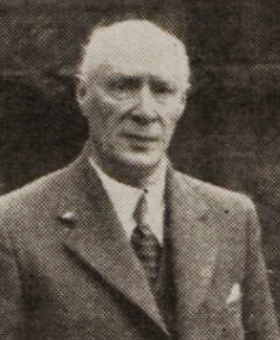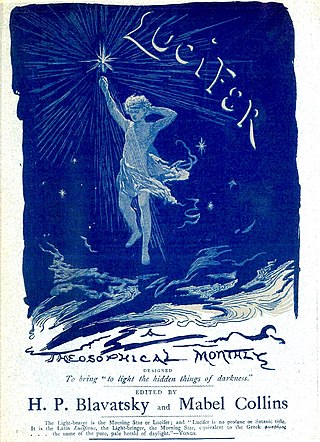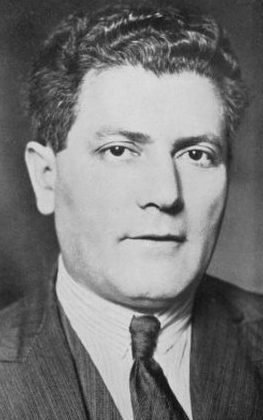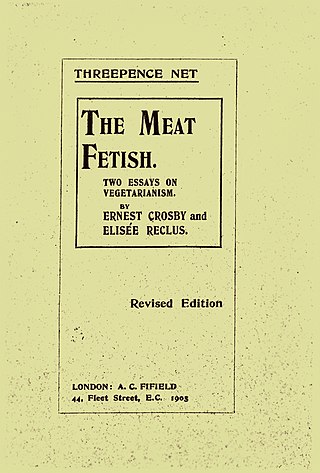
The Hermetic Order of the Golden Dawn, more commonly the Golden Dawn, was a secret society devoted to the study and practice of occult Hermeticism and metaphysics during the late 19th and early 20th centuries. Known as a magical order, the Hermetic Order of the Golden Dawn was active in Great Britain and focused its practices on theurgy and spiritual development. Many present-day concepts of ritual and magic that are at the centre of contemporary traditions, such as Wicca and Thelema, were inspired by the Golden Dawn, which became one of the largest single influences on 20th-century Western occultism.

Arthur Edward Waite was a British poet and scholarly mystic who wrote extensively on occult and esoteric matters, and was the co-creator of the Rider–Waite tarot deck. As his biographer R. A. Gilbert described him, "Waite's name has survived because he was the first to attempt a systematic study of the history of Western occultism—viewed as a spiritual tradition rather than as aspects of protoscience or as the pathology of religion."

The Major Arcana are the named or numbered cards in a cartomantic tarot pack, the name being originally given by occultists to the trump cards of a normal tarot pack used for playing card games. There are usually 22 such cards in a standard 78-card pack, typically numbered from 0 to 21. The name is not used by tarot card game players.

The Rider–Waite Tarot is a widely popular deck for tarot card reading. It is also known as the Waite–Smith, Rider–Waite–Smith, or Rider Tarot. Based on the instructions of academic and mystic A. E. Waite and illustrated by Pamela Colman Smith, both members of the Hermetic Order of the Golden Dawn, the cards were originally published by the Rider Company in 1909. The deck has been published in numerous editions and inspired a wide array of variants and imitations. It is estimated that more than 100 million copies of the deck exist in more than 20 countries.

Pamela Colman Smith, nicknamed "Pixie", was a British artist, illustrator, writer, publisher, and occultist. She is best-known for illustrating the Rider–Waite tarot deck for Arthur Edward Waite. This tarot deck became the standard among tarot card readers, and remains the most widely used today. Smith also illustrated over 20 books, wrote two collections of Jamaican folklore, edited two magazines, and ran the Green Sheaf Press, a small press focused on women writers.

Éliphas Lévi Zahed, born Alphonse Louis Constant, was a French esotericist, poet, and writer. Initially pursuing an ecclesiastical career in the Catholic Church, he abandoned the priesthood in his mid-twenties and became a ceremonial magician. At the age of 40, he began professing knowledge of the occult. He wrote over 20 books on magic, Kabbalah, alchemical studies, and occultism.

James Lewis Thomas Chalmers Spence was a Scottish journalist, poet, author, folklorist and occult scholar. Spence was a Fellow of the Royal Anthropological Institute of Great Britain and Ireland, and vice-president of the Scottish Anthropological and Folklore Society. He founded the Scottish National Movement.
Ithell Colquhoun was a British painter, occultist, poet and author. Stylistically her artwork was affiliated with surrealism. In the late 1930s, Colquhoun was part of the British Surrealist Group before being expelled because she refused to renounce her association with occult groups.

Paul Brunton is the pen name of Raphael Hurst, a British author of spiritual books. He is best known as one of the early popularizers of Neo-Hindu spiritualism in western esotericism, notably via his bestselling A Search in Secret India (1934) which has been translated into over 20 languages.

Lucifer was a journal published by Helena Blavatsky. The first edition was issued in September 1887 in London. The journal published articles on philosophical, theosophical, scientific and religious topics. It also contained book reviews, for example of Friedrich Nietzsche's Thus Spoke Zarathustra.

John William Brodie-Innes was a leading member of the Hermetic Order of the Golden Dawn's Amen-Ra Temple in Edinburgh.
Rider is a publishing imprint of Ebury Publishing, a Penguin Random House division. The list was started by William Rider & Son in Britain in 1908 when he took over the occult publisher Phillip Wellby. The editorial director of the new list was Ralph Shirley and under his direction, they began to publish titles as varied as the Rider–Waite tarot deck and Bram Stoker's Dracula.

Tarot card reading is a form of cartomancy whereby practitioners use tarot cards to purportedly gain insight into the past, present or future. They formulate a question, then draw cards to interpret them for this end. A traditional tarot deck consists of 78 cards, which can be split into two groups, the Major Arcana and Minor Arcana. French-suited playing cards can also be used; as can any card system with suits assigned to identifiable elements.

Nandor Fodor was a British and American parapsychologist, psychoanalyst, author and journalist of Hungarian origin.
John Stafford Wright was an Anglican theologian.
Violet Tweedale, née Chambers, was a Scottish writer, poet, and Spiritualist.

Harry James Edwards was a self-proclaimed spiritual healer, teacher and author who had a career of nearly 40 years.

The Brethren is a 1904 historical novel by H. Rider Haggard set during the Third Crusade. The Brethren features Saladin and the Assassins as characters.
John Arthur Hill, best known as J. Arthur Hill, was a British psychical researcher and writer.

"The Meat Fetish" is a 1904 essay by Ernest Crosby on vegetarianism and animal rights. It was subsequently published as a pamphlet the following year, with an additional essay by Élisée Reclus, entitled The Meat Fetish: Two Essays on Vegetarianism.














